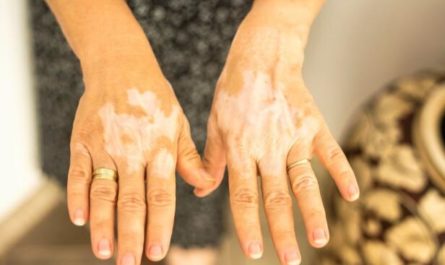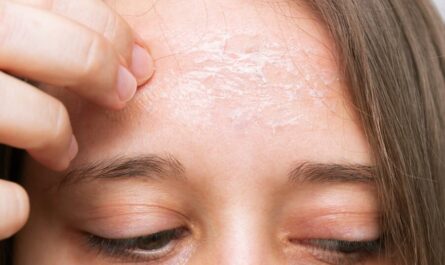Skin tags are common, harmless growths that can appear on various parts of the body, such as the neck, armpits, eyelids, and groin area. While they are usually benign and pose no medical complications, they can be bothersome and affect one’s confidence, especially when they are in visible areas. If you’re looking for ways to remove skin tags, there are several effective methods you can try. This article will explore 14 natural remedies to get rid of skin tags at home.
What are Skin Tags?
Skin tags, also known as acrochordons, are soft, noncancerous growths that often form in skin folds. Although the exact cause of skin tags is unknown, several factors have been associated with their development. These include irritation of the skin, the natural aging process, the presence of the human papillomavirus (HPV), and insulin resistance.
Skin tags are typically harmless and don’t require medical treatment. However, if they become irritated, snagged by clothing or jewelry, or cause pain, removal may be necessary.
How to Spot and Identify Skin Tags?
Skin tags are typically small, soft, and fleshy growths that hang off the surface of the skin. They are usually painless and do not cause any discomfort unless irritated or rubbed repeatedly. Here are some key characteristics to help you spot and identify skin tags:
1. Size: Skin tags are generally small in size, ranging from a few millimeters to a few centimeters in diameter. They are usually smaller than a pencil eraser.
2. Appearance: Skin tags often have a smooth or slightly wrinkled surface. They can be flesh-colored or slightly darker than the surrounding skin. In some cases, they may appear slightly pigmented.
3. Shape: Skin tags can have a variety of shapes, but they typically have a narrow stalk or peduncle that attaches them to the skin. They can be round, oval, or irregularly shaped.
4. Location: Skin tags commonly occur in areas where there is friction or rubbing, such as the neck, underarms, groin, eyelids, and beneath the breasts. However, they can appear on any part of the body.
5. Texture: Skin tags are usually soft and pliable to the touch. They are made up of normal skin tissues, including collagen fibers and blood vessels, and are not typically painful.
It is important to note that not all skin growths are skin tags. Other skin conditions, such as moles, warts, seborrheic keratoses, or certain types of skin cancer, can have similar appearances.
If you are unsure about growth or if it shows any concerning characteristics, it is recommended to consult a healthcare professional.

14 Natural Remedies to Get Rid of Skin Tags
Now, let’s explore the 16 natural remedies that can help you get rid of skin tags effectively and safely.
1. Tea Tree Oil
Tea tree oil is known for its antimicrobial and antifungal properties, which can help dry out the skin tag and eventually cause it to fall off. Additionally, tea tree oil has anti-inflammatory effects that can reduce any irritation or redness around the skin tag.
- Wash the area around the skin tag with mild soap and water to ensure it is clean and dry.
- Soak a cotton ball in water and gently squeeze out the excess moisture.
- Add 2-3 drops of tea tree oil to the damp cotton ball.
- Apply the oil-soaked cotton ball directly to the skin tag.
- Secure it in place with a bandage or medical tape.
- Leave it on for a few hours or overnight.
- Repeat this process daily until the skin tag falls off.
2. Apple Cider Vinegar to Get Rid of Skin Tags
Apple cider vinegar contains acetic acid, which has been found to break down the tissue of skin tags. The acidic nature of apple cider vinegar helps to dry out the skin tag, causing it to shrink and eventually fall off.
- Clean the skin tag and the surrounding area with mild soap and water.
- Soak a cotton ball in apple cider vinegar.
- Gently press the soaked cotton ball onto the skin tag.
- Secure it in place with a bandage or medical tape.
- Leave it on for 15-30 minutes.
- Rinse the area with water to remove any residual vinegar.
- Pat the area dry.
- Repeat this process 2-3 times a day until the skin tag disappears.

3. Garlic
Garlic contains enzymes that can break down the tissue of the skin tag, causing it to shrink and eventually fall off. In addition, It also has antimicrobial properties that can prevent infection.
- Take a fresh garlic clove and crush it to form a paste.
- Apply the garlic paste directly to the skin tag.
- Cover the area with a bandage or medical tape.
- Leave it on for 30 minutes to an hour.
- Rinse the area with water to remove the garlic paste.
- Pat the area dry.
- Repeat this process daily until the skin tag is gone.
4. Banana Peel to Remove Skin Tags
The enzymes and antioxidants present in the banana peel can help dissolve the skin tag and promote its removal. Besides, Banana peel also has soothing properties that can reduce any discomfort or irritation.
- Take a ripe banana and cut a small piece of the peel.
- Place the inner side of the banana peel against the skin tag.
- Secure it in place with a bandage or medical tape.
- Leave it on overnight.
- In the morning, remove the banana peel and rinse the area with water.
- Pat the area dry.
- Repeat this process nightly until the skin tag disappears.
5. Oregano Oil
Oregano oil contains carvacrol, a compound known for its antimicrobial properties. This oil can help dry out the skin tag and cause it to fall off. Oregano oil also has anti-inflammatory effects that can reduce any swelling or redness around the skin tag.
- Dilute oregano oil with a carrier oil, such as coconut oil, in a 1:3 ratio.
- Clean the skin tag and the surrounding area with mild soap and water.
- Apply the diluted oregano oil to the skin tag using a cotton ball.
- Gently massage the oil into the skin tag for a few seconds.
- Cover the area with a bandage or medical tape.
- Leave it on for a few hours or overnight.
- Rinse the area with water and pat it dry.
- Repeat this process daily until the skin tag is gone.

6. Castor Oil
Castor oil has been used for centuries as a natural remedy for various skin conditions. It helps soften and dissolve the skin tag, allowing it to fall off naturally. Castor oil also has anti-inflammatory properties that can reduce any inflammation or discomfort.
- Clean the skin tag and the surrounding area with mild soap and water.
- Soak a cotton ball in castor oil.
- Gently press the oil-soaked cotton ball onto the skin tag.
- Secure it in place with a bandage or medical tape.
- Leave it on overnight.
- In the morning, rinse the area with water to remove any residual oil.
- Pat the area dry.
- Repeat this process daily until the skin tag disappears.
7. Vitamin E for Skin Tags
Vitamin E is known for its antioxidant properties, which can help promote healing and reduce inflammation. It can also help shrink the skin tag and facilitate its removal.
- Pierce a vitamin E capsule with a pin or needle to extract the oil.
- Apply the vitamin E oil directly to the skin tag.
- Gently massage the oil into the skin tag for a few minutes.
- Leave it on and allow it to absorb into the skin.
- Repeat this process twice daily until the skin tag falls off.
8. Baking Soda and Castor Oil
The combination of baking soda and castor oil can help dry out the skin tag, causing it to shrink and eventually fall off. Baking soda acts as an exfoliant, while castor oil softens and dissolves the skin tag.
- Mix equal parts baking soda and castor oil in a small bowl to form a paste.
- Clean the skin tag and the surrounding area with mild soap and water.
- Apply the paste directly to the skin tag.
- Cover the area with a bandage or medical tape.
- Leave it on overnight.
- In the morning, rinse the area with water to remove the paste.
- Pat the area dry.
- Repeat this process daily until the skin tag disappears.
9. Dandelion Stem Juice
Dandelion stem juice contains sap that can help shrink and remove skin tags. The enzymes in the sap break down the tissue of the skin tag, causing it to gradually disappear.
- Find a fresh dandelion plant with a stem.
- Cut the stem and collect the sap that oozes out.
- Apply the dandelion stem juice directly to the skin tag.
- Allow it to air dry.
- Repeat this process 2-3 times a day until the skin tag falls off.

10. Lemon Juice to Get Rid of Skin Tags
Lemon juice contains citric acid, which has natural acidic properties that can gradually dissolve the skin tag. It can also help lighten the appearance of the skin tag.
- Squeeze fresh lemon juice into a small bowl.
- Clean the skin tag and the surrounding area with mild soap and water.
- Apply the lemon juice to the skin tag using a cotton ball.
- Let it air dry.
- Rinse the area with water to remove any residual lemon juice.
- Pat the area dry.
- Repeat this process 2-3 times a day until the skin tag disappears.
11. Onion Juice
Onion juice contains acids that can dissolve the skin tag and promote its removal. It also has antimicrobial properties that can prevent infection.
- Peel and chop an onion.
- Blend or crush the onion pieces to extract the juice.
- Clean the skin tag and the surrounding area with mild soap and water.
- Apply the onion juice directly to the skin tag.
- Allow it to air dry.
- Rinse the area with water to remove the onion juice.
- Pat the area dry.
- Repeat this process twice daily until the skin tag falls off.
12. Aloe Vera
Aloe vera has soothing and healing properties that can help shrink the skin tag. It also has anti-inflammatory effects that can reduce any redness or irritation.
- Cut a fresh aloe vera leaf and extract the gel from the inside.
- Clean the skin tag and the surrounding area with mild soap and water.
- Apply the aloe vera gel directly to the skin tag.
- Allow it to air dry.
- Repeat this process 2-3 times a day until the skin tag disappears.

13. Nail Polish to Remove Skin Tags
Applying nail polish can create a barrier that cuts off the oxygen supply to the skin tag, causing it to dry up and fall off. This method is often used for small skin tags.
- Clean the skin tag and the surrounding area with mild soap and water.
- Apply a coat of clear nail polish directly to the skin tag.
- Allow it to dry completely.
- Repeat this process daily, applying a fresh coat each time, until the skin tag is gone.
14. Dental Floss
Tying off the skin tag with dental floss cuts off its blood supply, causing it to wither and fall off. This method is often used for small to medium-sized skin tags.
- Clean the skin tag and the surrounding area with mild soap and water.
- Take a piece of dental floss and tie it tightly around the base of the skin tag, as close to the healthy skin as possible.
- Ensure that the dental floss is secure but not too tight to avoid discomfort or pain.
- Leave the dental floss in place until the skin tag shrinks and falls off naturally.
- If the dental floss becomes loose, re-tie it.
Can skin tags be cancerous?
No, skin tags are typically not cancerous. They are benign, harmless growths that occur on the skin’s surface. Skin tags are made up of normal skin tissues and are usually painless unless irritated or rubbed repeatedly.
However, it is important to note that while skin tags are generally harmless, there are rare cases where a growth may be mistaken for a skin tag but turn out to be a different type of skin lesion, such as a skin cancer.
If you notice any changes in the appearance, color, texture, or size of a skin tag, or if it becomes painful, bleeds, or grows rapidly, it is important to consult a healthcare professional for proper evaluation and diagnosis.
Can I remove skin tags safely at home?
While it is possible to remove skin tags at home, it is important to exercise caution and ensure that you do it safely. If you choose to remove skin tags at home, here are a few key points to keep in mind to ensure safety:
1. Proper Diagnosis: Before attempting to remove a skin tag, it is crucial to ensure that it is indeed a skin tag and not a different type of skin growth. If you are unsure, it is best to consult a healthcare professional for an accurate diagnosis.
2. Cleanliness and Hygiene: Before and after any removal method, make sure to clean the skin tag and the surrounding area with mild soap and water. This helps reduce the risk of infection.
3. Gentle Techniques: Use gentle techniques when removing skin tags to avoid causing unnecessary pain or damage to the surrounding skin. Avoid pulling or cutting the skin tag forcefully.
4. Sterilized Tools: If you choose to use tools like scissors or tweezers for removal, ensure that they are sterilized to minimize the risk of infection. Clean the tools with rubbing alcohol or boiling water before use.
5. Control Bleeding: Skin tags typically do not bleed much, but if you do experience bleeding during removal, apply gentle pressure with a clean cloth or sterile gauze until the bleeding stops. If bleeding persists, seek medical attention.
6. Monitor for Signs of Infection: After removing a skin tag, monitor the area for any signs of infection such as increased redness, swelling, pain, or discharge. If you notice any of these symptoms, consult a healthcare professional.
When to Seek Medical Attention?
While skin tags are typically harmless, there are certain instances where medical attention may be necessary. If you notice any changes in the appearance of a skin tag, such as growth, bleeding, or itching, it’s important to consult a healthcare professional.
Additionally, if you have any concerns about a skin tag or if it doesn’t respond to at-home treatments, it’s best to seek medical advice.






